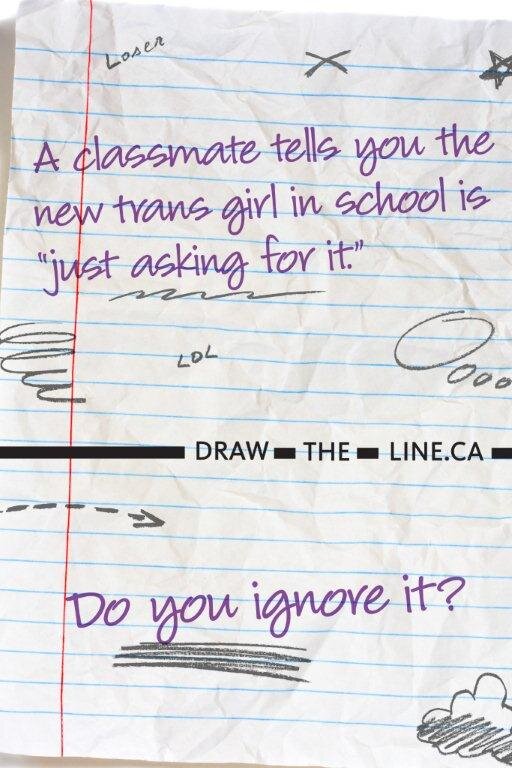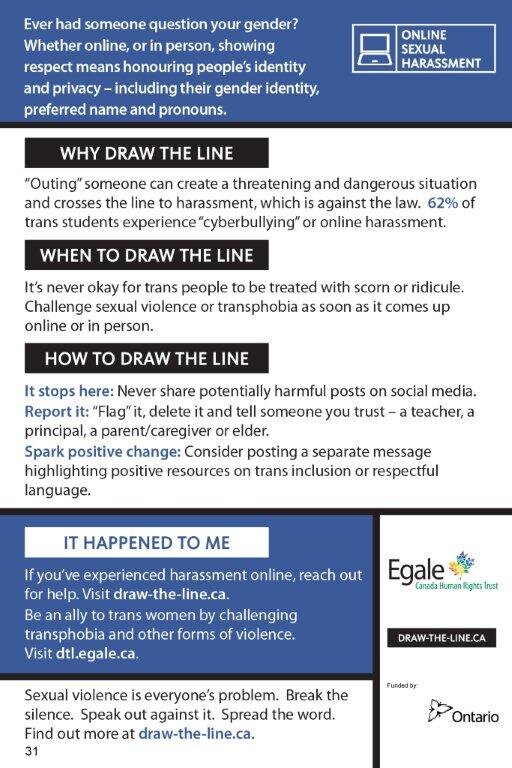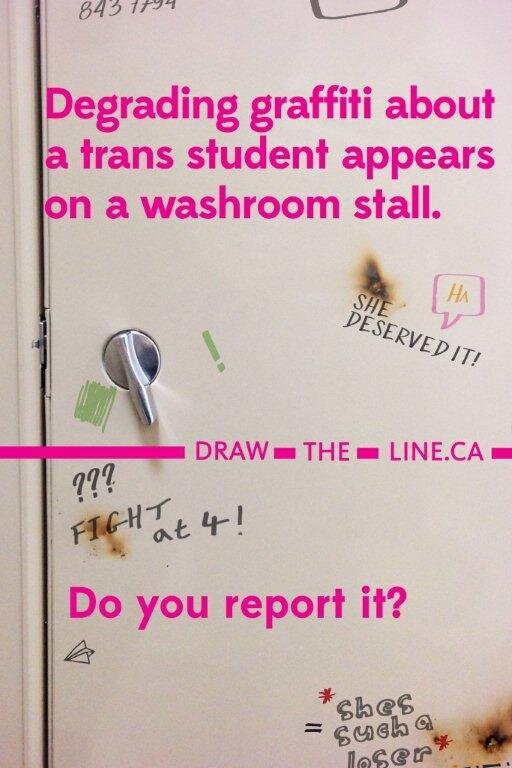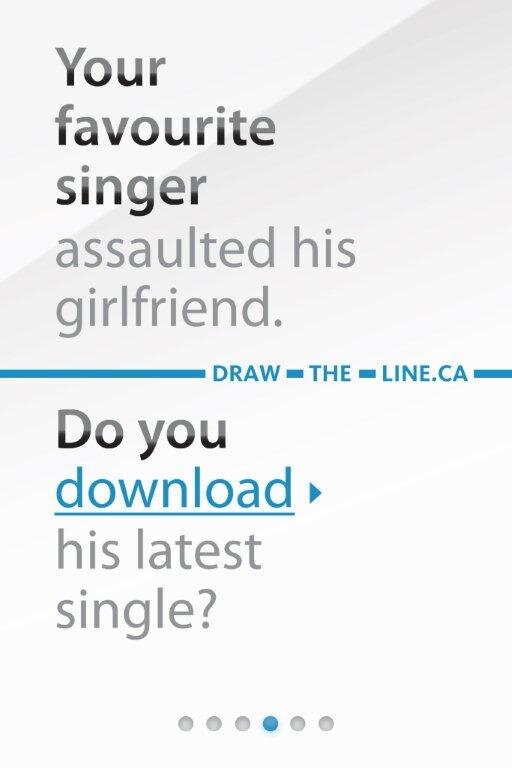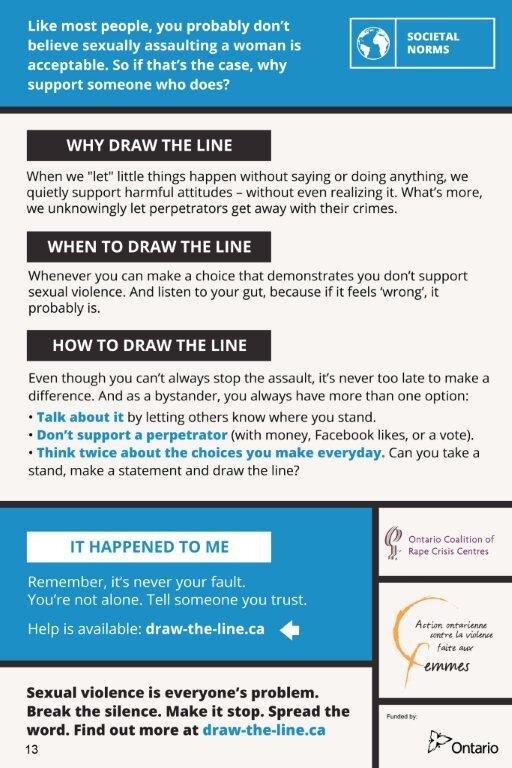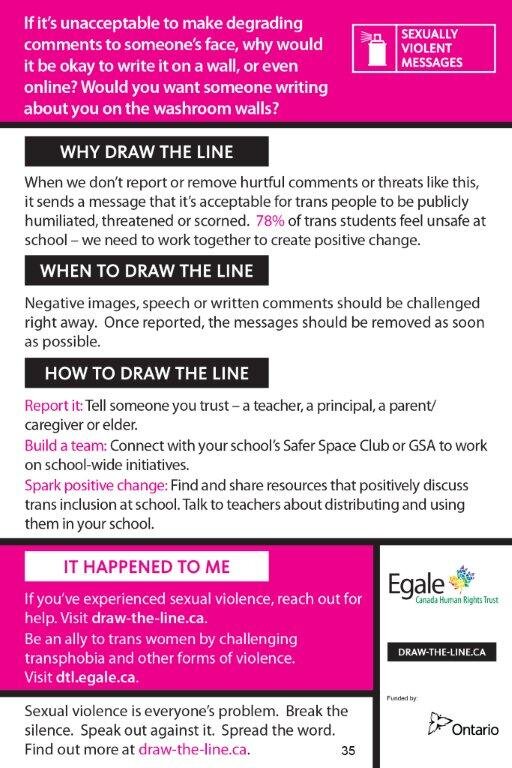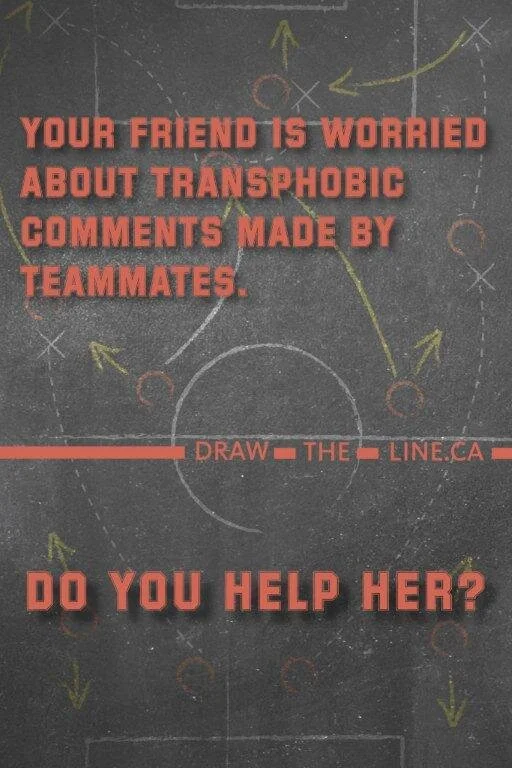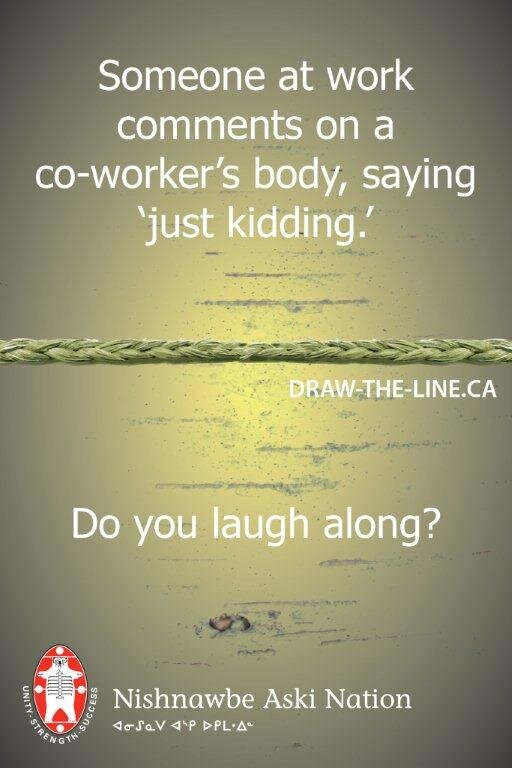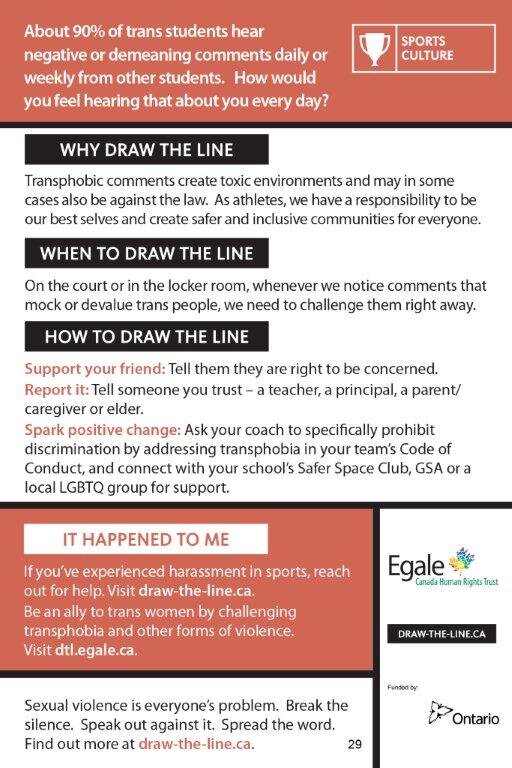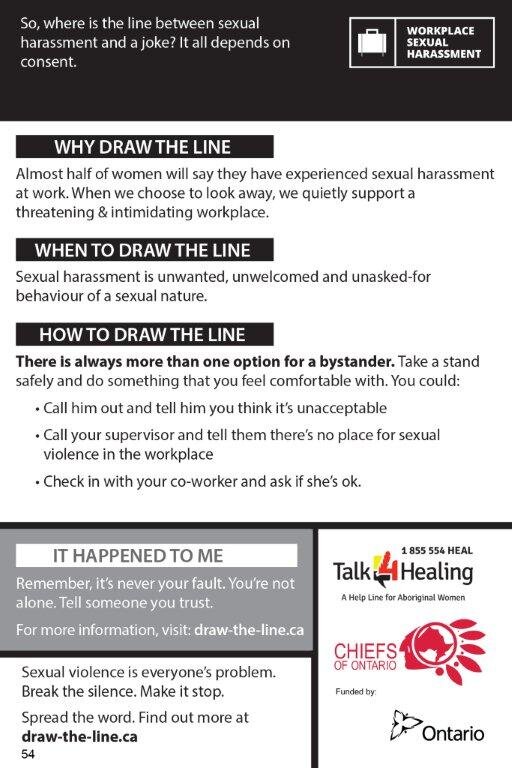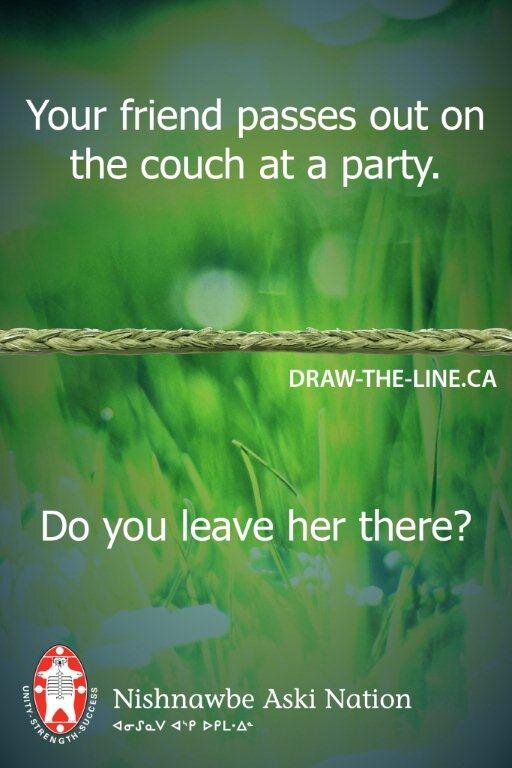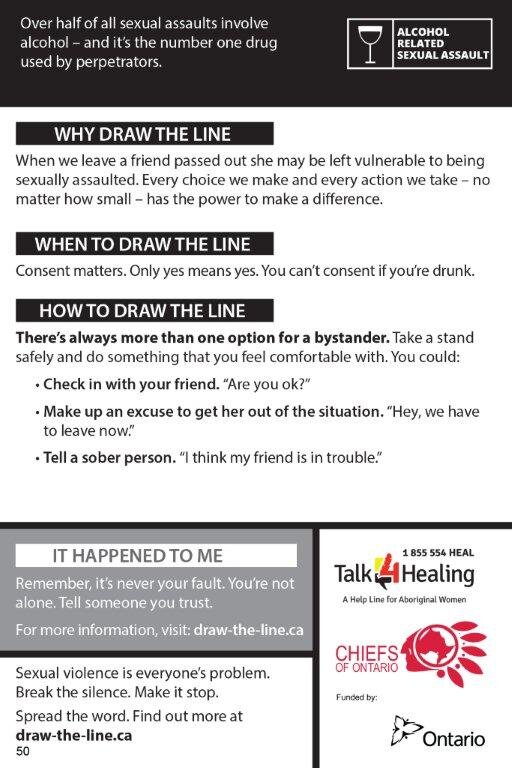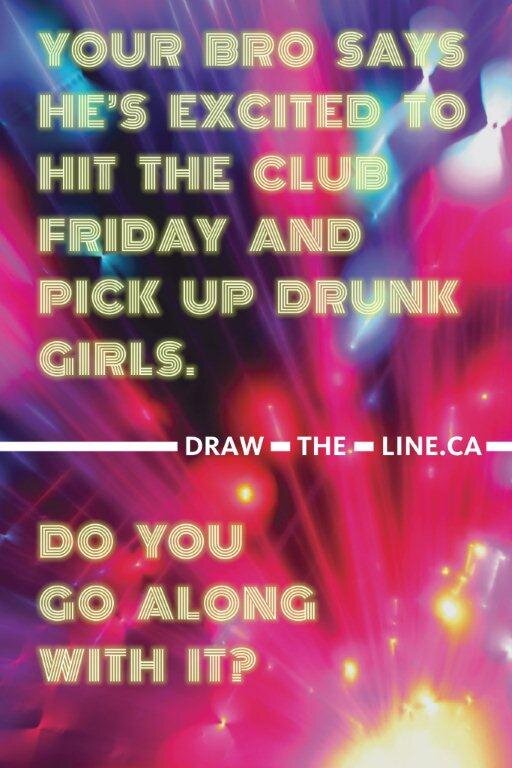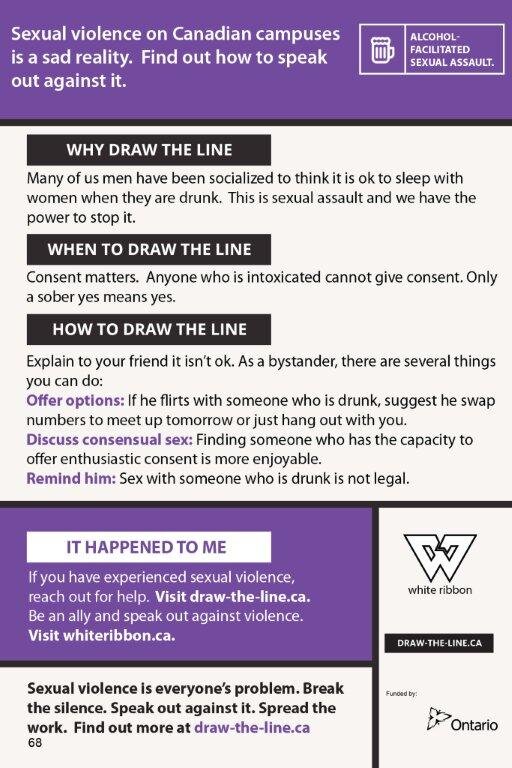Bystander Intervention
During 16 Days of Activism Against Gender-Based Violence, from November 25 to December 10, we call on everyone to take action!
We get this question a lot in workshops: What should I do if I see:
my boss commenting on a coworkers body?
someone hitting on someone at a bar and not taking ‘no’ for an answer?
my friend joke about getting girls drunk so they will have sex with him?
a teammate casually mention that ‘you gotta put women in their place?’
We know that feeling in our stomach when something is wrong, but very rarely are we taught the skills to interrupt behaviour that can lead to sexual assault or partner violence.
VIolence is everyone’s issue
Because of the ridiculously high rates of violence, we can’t assume that abuse doesn’t happen in our communities, to our friends, in our schools, and at our workplaces.
There are useful and proven skills that we can use to interrupt behaviour that is either abusive or can lead to violence.
Start Early
‘The standard you walk past is the standard you uphold.’ - Lieutenant General David Morrison, Chief of Australia’s Army
‘But it’s just words!’ We hear that all the time. Not only can words truly hurt, but also, if something racist, sexist, homophobic, or otherwise harmful is said and left to pass, not only does the person doing the harm assume that that behaviour is welcome in that space, but others who hold those harmful beliefs will also believe that their racism, sexism, homophobia, etc. will be welcome.
It’s hard at first, but essential to create a culture of consent and equity in small ways as well as giant ways.
Calgary Communities Against Sexual Abuse created this great infographic about the link between oppressive thoughts and words to more physical forms of violence.
Created by Calgary Communities Against Sexual Abuse
It’s not always a direct line between degrading words about women’s bodies to rape, but oppressive attitudes and beliefs create an environment where sexual violence is expected and the norm as well as a culture where it is extremely difficult for survivors to talk openly about their experiences of violence.
Definition by FORCE: Upsetting Rape Culture
Infographic created by YWCA Canada
Get skilled
You can interrupt sketchy behaviour at a bar, concert, or a party to prevent
sexual violence.
The first step, as always, is learning more about the dynamics of violence, the myths we’re taught about sexual assault and partner violence, and what consent really looks like. A great and easy way to make this part of everyday learning is following incredible consent activists and educators on social media.
These skills are new for lots of folks! Just like first aid, these strategies require learning, relearning, and practice.
Delegate
Don't go it alone. Gather your peeps. Who is near that can help? A friend? Security staff? Even if it's just to confirm that the behaviour is not OK.
"I think she needs our help, but I don't know what to do. Have any ideas?"
"Will you watch while I go chat with them?"
Direct
Approach either the person being targeted or the person doing the harassing and be direct.
"Are you OK?"
"Can I help you?"
"That's not OK."
"You need to stop."
Distract
Think of a way to distract the folks involved in the situation: either the person being targeted or the person doing the harassing.
"Can you take a pic of my friends and I?"
"What time is it?"
"Where's the washrooms?"
"That's a FAB outfit! Where did you get it?"
"My friend's gone missing. Can you help me find them?"
Document
Make a record or keep your eye on the situation in case it escalates.
Practice
Draw the Line is a scenario-based bystander intervention campaign created by the Ontario Coalition of Rape Crisis Centres and Action ontarienne contre la violence faite aux femmes.
Nervous? That’s Normal
DWS has got your back, whether it’s inviting us to do a bystander intervention workshop for your group or calling our 24 hour support line to chat about intervention skills!
Check out all the 16 Days of Activism events here:
Never miss a post! Keep in touch with DWS…





